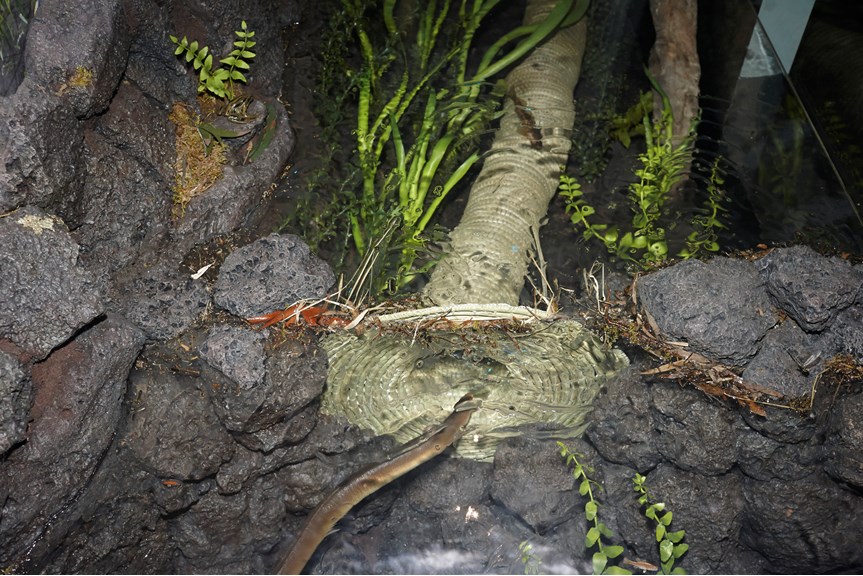Investigating the past
How have Australia’s First Peoples maintained sustainable food systems for over 65,000 years?
Historically, the narrative created by colonial settlers to Australia was that First Peoples were largely hunter/gathers, however, more recent discussions, evidence, and stories have brought to light the structured and seasonal agricultural practices of Indigenous communities.
The use of cultural burning and use of sustainable and seasonal crop species meant that Indigenous communities were food secure and able to support populations for over 65,000 years.
Encourage students to use the mortar and pestle to crush some roasted seeds. You may like to purchase whole roasted wattle seed or kangaroo grass seed and use this in a later activity to make damper.
- How might this process compare to present day bread making?
- Compare the sustainability of this and present day bread making
- How is this bread making process sustainable?
- Research videos or images of domestic and industrial bread making machinery and compare present bread production to First Peoples methods.
- Discuss why bread can be sold so cheaply in Australia.
- Discuss the positives and negatives of cheap bread availability.
Much discussion around food security is centred on the sustainability of food production. Research some existing practices or potential opportunities to make bread production more sustainable in Australia. Consider: farming, crop types, transport, location of farmlands, use of water and fertilisers, etc.
Cross curriculum links: VCEBB024
Read: Industrial revolution in Australia: impact on the wheat industry (Museum of Applied Arts & Sciences)
- Create a timeline that highlights key changes to Australia’s agricultural techniques over time. Consider the six food security dimensions. For each key change, discuss the impact on food security for communities.
- List the ways European settlers impacted the natural landscape.
- Overall, would you say that European Settlers had a higher or lower level of food security compared to First Peoples? Why?
Research how bread is mass produced in Australia today.
- How has bread making changed over time?
- How has technology allowed us to mass-produce carbohydrates?
- What is lost in this modern-day process? (Consider: culture, nutrition, food security, and simplicity.)
Make wattle seed damper with your class. You may like to use the mortar and pestle to prepare your grain.
Recipe: How to make wattle seed damper (South Australian Museum)
- How does this process differ from present bread making techniques?
- How has technology improvements changed our level of food security over time? List some trade-offs that have occurred (consider: sustainability, traditional practices etc.)
Curriculum links: VCGGC132
Cross curriculum links: VCDSTC057
- What is Murnong and how is this this plant interconnected with ongoing food security for First Peoples?
- Research some tuber vegetables we regularly eat today. Compare the uses of these vegetables to the Murnong.
- What food security challenges did First Peoples face after colonisation?
Read: A clash of cultures: sheep paddock (Sovereign Hill)
Note to teachers: Reference to death and massacres in the article.
- Explain the conflict between First Peoples and European farming techniques. What were the direct and indirect impact of these conflicts?
- What food security challenges did First Peoples face after colonisation?
- Suggest how these conflicts still exist today. (Consider: land rights, food security, crops grown, farming practices, distribution of goods, and future of food production.)
Cross curriculum links: VCEBB024
Read Chapter 9: Bruce Pascoe: Aboriginal agriculture, technology and ingenuity (ABC Education Digibook)
- What is distinctive about the environment of Budj Bim?
- How did First Peoples respond to this environment?
- What sort of understanding of the climate, vegetation and soils of this landscape would First Peoples have need to create these systems?
- How old is this system? Was it a sustainable approach? Why?
- How does the eel trap work?
- How were eels preserve to create an aquaculture industry?
- What is the key lesson that we can learn about land and resource management from the First Peoples practices?
- Research: Where else in Australia were fish traps used before colonisation?
For further information about World heritage site and land and resource management strategies used by First Peoples to achieve food security and economic stability visit:
- Budj Bim World Heritage Listing
- Budj Bim cultural landscape (UNESCO)
- Gunditj Mirring (Traditional Owners Aboriginal Corporation)
In groups, research and use a jigsaw activity to discuss the following suggested questions:
- Why were First Peoples populations food secure?
- With reference to the six dimensions, how has food security for First Peoples changed over time?
- Compare how natural water systems have changed over time as a result of modern agriculture. Compare the management and/or use of these systems with First Nation practices.
Curriculum links: VCGGK136, VCGGK137
Cross curriculum links: VCHHC122, VCHHC126, VCHHC128
Read and explore: Bringing life back to the land (Federation of Victorian Traditional Owner Corporations)
Explain how fire can be used as a tool for land maintained and agricultural productivity.
Complete a think pair share, exploring the difference in historical and present perspectives on fire in the environment. Consider the SHEEPT factors to expand ideas.
Explore: Traditional owner burns (Forest Fire Management Victoria)
- Describe the Victorian Traditional Owner Cultural Fire Strategy. What is its purpose and how does it achieve its aims?
- How fire can be a tool for sustainability and not something to be feared?
Curriculum links: VCGGK135, VCGGK136, VCGGK137, VCGGK138, VCGGC128
Cross curriculum links: VCHHC121, VCHHC122, VCHHC124, VCHHC125, VCHHK134, VCCCC036, VCCCC037, VCCCC038
- Mapping Aboriginal Melbourne (City of Melbourne) Interactive map
- Food Culture: Aboriginal Bread (Australian Museum)
- Grindstones (Australian Museum)
- Aboriginal grinding stones (Aboriginal Victoria)
- Were Indigenous Australians the world's first bakers? (SBS Food) An interview with Bruce Pascoe on First Peoples bread making and food security.
Next

